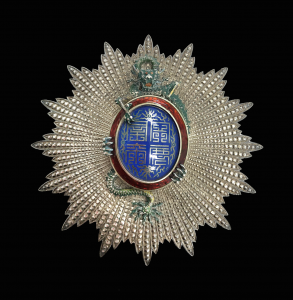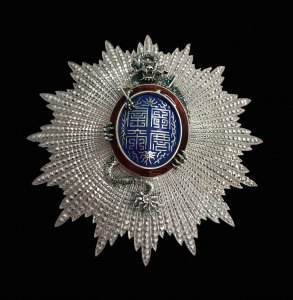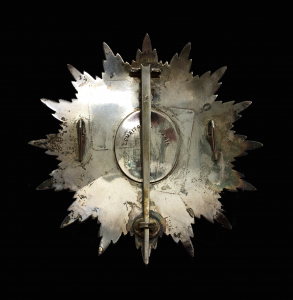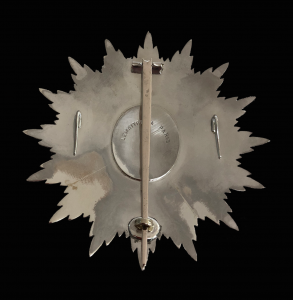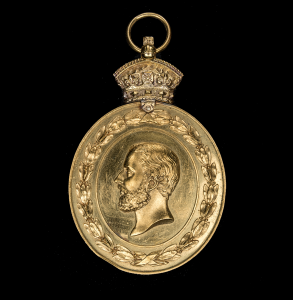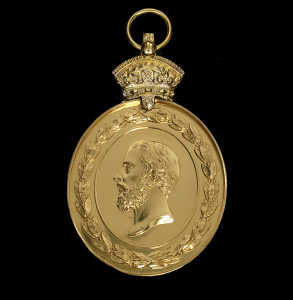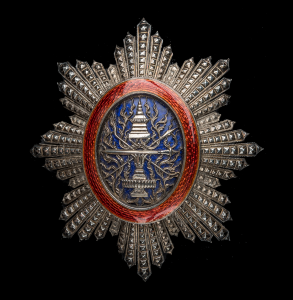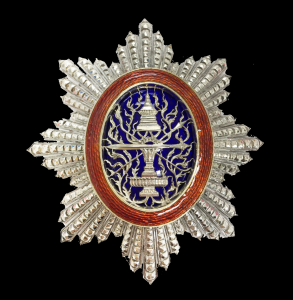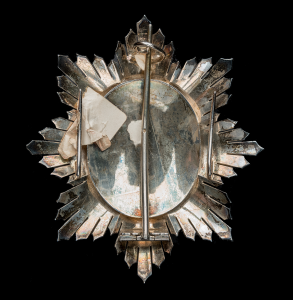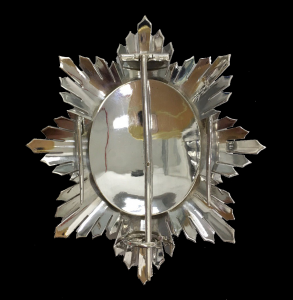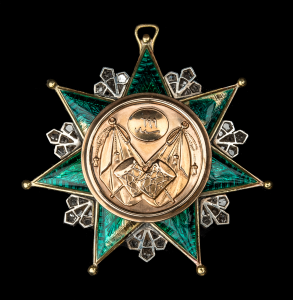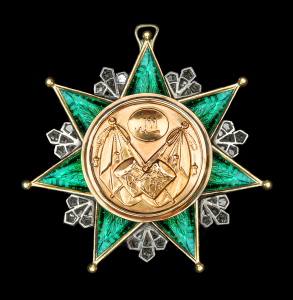Restoration & Conservation
Restoration & Conservation
OUR SPECIALISATION
From Medal Making to Restoration
Our craftsmen specialise in restoring artefacts crafted out of gold, silver, brass, precious stones, and enamel. The restoration work undertaken for each piece depends on the customer’s preferences. Artefacts displayed in musuems are restored minimally; the blemished and patina a reminder of the centuries that have weathered it.
For artefacts who continue to live outside of musuems, displayed on mantle pieces or worn on lapels, a full suite of restoration service is available. From gold re-plating to a new coat of vitreous enamel, speak to our restoration team to understand how your heirloom pieces can be given the help it needs to stand the test of time.
RESTORATION
Featured Projects
-

Obverse (Before)
The Order of the Dragon of Annam is a French colonial order jointly awarded by Vietnam and France. This particular breast star dates back to 1933 and is part of a larger collection of orders, decorations, and medals that were handed to our artisans for restoration. Multiple scratches and dents were observed on the obverse of the silver breast star. Originally plated in gold, the gold plating has since tarnished. The highlight of this breast star is an ornate green dragon coiled around the central blue enamelled medallion bearing the text “Emperor Dong Kkanh” in stylised Chinese characters. The enamelled surface has aged well with no visible surface cracks. The dragon was severely discoloured.
-

Obverse (After)
The extent of our restoration efforts depends on the preference of each collector. The collector considers a variety of factors such as the reversibility of treatment and how the medals will subsequently be displayed. This breast star was restored for display in a private museum. No re-plating work was undertaken. To improve surface shine, a mild abrasive was applied to the obverse of the breast star. The light scratches and dents were polished away.
-

Obverse (Before)
This large oval sash badge was instituted to commemorate the visit of the Prince of Wales to India in 1875 - 1876. The badge appears to have been minted out of gold. Multple scratches and dents were observed on the obverse. The sash badge might have been orginally treated with a mirror-finish. Embossed details such as the laurel wreath surrounding the bust of the Prince of Wales and all inscriptions might have been treated with a matte finish. The entire surface is dull due to prolonged wear and tear. Discolouration due to oxidation was also observed at the base of the crown.
-

Obverse (After)
To improve surface shine, a mild abrasive was applied to the surface of the sash badge. The light scratches and dents were polished away. The embossed bust and laurel wreath were avoided to retain its matte finish. Micro-crystalline wax was applied over the entire sash badge to prevent further oxidation and tarnishing.
-

Obverse (Before)
This breast star from the Royal Order of Cambodia, Grand Cross, was awarded in 1933. Prior to 1948, this was a French colonial order awarded for service to the colony. Presently, it is awarded by the King of Cambodia and remains the highest Cambodian distinction. Orginally plated in gold, the gold plating has since completely tarnished. Crafted in silver, there is discoloration obsevered on the obverse of the breast star due to decades of oxidation. The surface was also marred by scratches and multiple dents. The red and blue vitreous enamel decorating the central medallion was in excellent condition with no visible cracks or chips.
-

Obverse (After)
A mild abrasive was applied over the surface of the breast star to smoothen out scratches and improve overall surface shine. Since there is a risk of possible variance between the colour of the original gold plating and the newly applied plating layer, no re-plating work was underataken. The breast star was treated with a light cleaning solution to remove stains and dust.
-

Reverse (Before)
This sash badge is part of the first class Order of Osmanieh, a military decoration from the Ottoman Empire. This particular specimen was awarded in 1898. Parts of the vitreous green enamel decorating the seven-pointed star have chipped off.The central medallion bearing a trophy of arms and the year AD699 (the year of the Ottoman Empire's foudning) also appeared to be slightly discoloured due to oxidation.
-

Reverse (After)
A layer of green cold enamel was applied over areas where the vitreous enamel have chipped off. The cold enamel can be subsequently removed if so desired. The central medallion was buffed with a light abrasive to remove as much discolouration as possible and also to smoothen out all visible dents and scratches. Micro-crystalline wax was applied over the entire sash badge to prevent further oxidation and tarnishing.
THE CONSERVATION PROCESS
Analysis & Detailed Documentation
Prior to commencing work, our craftsmen prepare a detailed report to record the present condition of the artifacts. A treatment report laying out the different steps is prepared and the risks for each step is analysed and reported. Upon the customer’s approval, treatment is undertaken.
